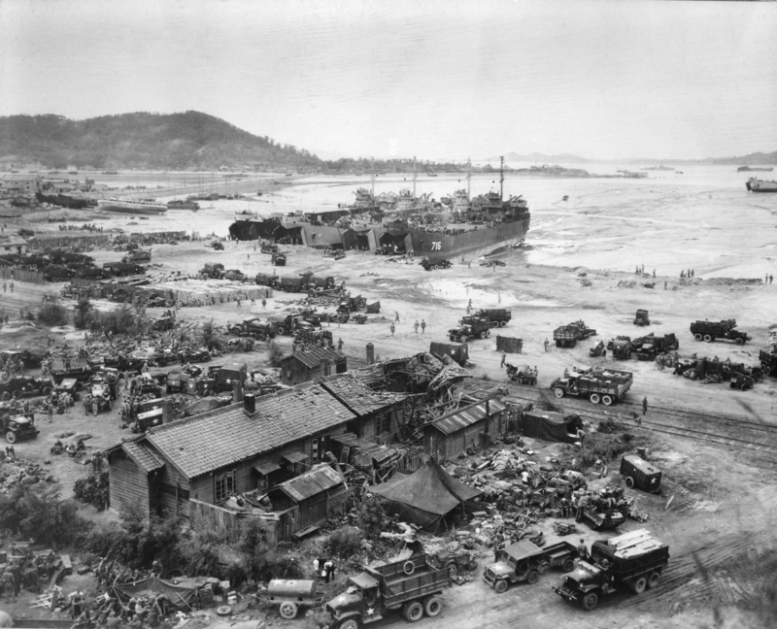INTRODUCTION: THE TIES THAT BIND. In August 1947, a naval mission was organized by the U.S. Navy in Subic Bay Naval Base to bring in former Auxiliary Motor Minesweepers (AM) of the U.S. Navy and Royal Navy to form the nucleus of the Korean Naval Defense Corps being activated under the supervision of the U.S. Coast Guard. The Korean Naval Defense Corp‘s later became the Republic of Korea Navy (ROKN).
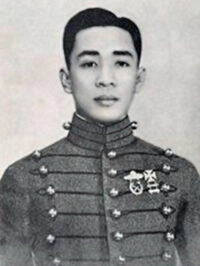
LT Ramon A Alcaraz PN
The vital task was entrusted to the Philippine Naval Patrol (PNP) where Filipino Naval Officers skippered the ship’s to the Ports of Jinhae, Pusan and Seoul. The task force was led by LTSG RAMON ALCARAZ. The other Skippers of the Minesweepers were ENSIGNS Leovigildo Gantioqui, Marcelino Calinawan, Jose Vasquez, Dioscoro Papa, Antonio S Calingo, Federico M Martir, and Godiardo G Nonato.
Make no mistake, these Filipino Naval Officers were all veterans of World War II. Upon setting foot on Korea, a foreboding scenario engulfed them that the country would soon be at war based on the security issues at that time. Their assumption was correct; the peninsula went in flames while North Korean troops crossed the border and invaded Seoul on 25-June-1950.
COMBAT SERVICE SUPPORT (CSS) and ESCORT OPERATIONS: As the First Southeast Asian nation and the Third United Nations member to deploy troops to Korea unknown too many, the Philippine Navy played a pivotal role in ferrying to and from Korea four of the five Philippine Expeditionary Force to Korea (PEFTOK) Battalion Combat Teams beginning in 1951. The Philippine Navy of that era possessed five Landing Ship Tanks (LST’s) in the Service Squadron now under Commander RAMON ALCARAZ PN.
These vessels, namely: RPS Cotabato (LT-36- LCDR FLORENTINO BUENAVENTURA PN), RPS Pampanga (LT-37- CDR TOMAS ROBENIUL PN), RPS Bulacan (LT-38- CDR TANDKO CENTI PN- First Filipino Muslim Naval Officer), RPS Albay (LT-39- LT JOSE ORDONEZ PN) and RPS Misamis Oriental (LT-40- LTJG PABLO PASCUA and later, LT DOMINADOR SANTOS) performed herculean tasks in Combat Service Support Operations to the Filipino Soldiers in the theater.
In 1953, an important but gloomy task was undertaken by RPS Cotabato (LT-36) under LT VICTOR JOSE PN in bringing home bodies of the PEFTOK Soldiers who were killed in action during the war. ENS ALFREDO DIVINO PN was also aboard the LT-36 vessel during its initial CSS mission.
The 16 Submarine Chasers of the Philippine Fleet provided an impressive escort mission to the departing PN LST’s and U.S. Transport Ships carrying Filipino troops to and from Korea with RPS Capiz (PS-27). She and her sister ship RPS Negros Occidental (PS-26) escorted USNS SGT Sylvester J Antolak (T-AP-197) from Corregidor Island to the outskirts of South China Sea in September 1950.
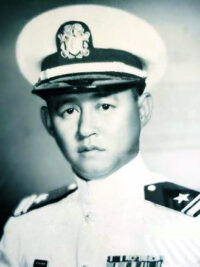
LTJG VICTOR O JOSE PN was the Skipper
of RPS Cotabato (LST-75/LT-36) (Photograph
Courtesy of Buddy Jose, son of the late
Commodore Victor O Jose AFP).
PHILIPPINE LIAISON GROUP-UN COMMAND LIAISON OFFICE, TOKYO, JAPAN: The Korean War was the First

LCDR Emilio S Liwanag PN. (Photograph
courtesy of Marylou Liwanag-Fuentespina,
daughter of the late Capt Emilio S Liwanag
PN.)
Armed Forces of the Philippines (AFP) Joint Overseas Mission. Embedded within the 10th BCT is then LCDR EMILIO S LIWANAG PN who served as their Gunnery and Logistical officer. He commanded a battery of six-105mm howitzers during the defining battle between Filipino and Chinese forces at the Battle of Yultong on 22-23 April 1951.
Early on, LCDR Liwanag was responsible for securing from an American Depot in Pusan a squadron of 7 US-made M24 Chafee light tanks and Heavy Weapons for the 10th BCT.
After his stint with the 10th BCT, now CDR Liwanag would serve as the Deputy Commander of the Philippine Liaison Group to UNC in Tokyo, Japan with CDR SANTIAGO C NUVAL PN (a future PN Flag Officer In Command) as head of the mission.
CDR Liwanag was also the Senior Naval Advisor to the Philippine Diplomatic Mission in Korea where he earned the US Legion of Merit for valuable logistical assistance to Filipino and allied troops in the Korean conflict.
POSTWAR PHILIPPINE-KOREAN NAVAL RELATIONS. The postwar diplomatic and defense cooperation between the two countries were at an all-time high with the exchange and visits of officers and personnel as well as fleet units beginning with the visit of the Frigate ROKS Imjin (PF-66) to Manila in 1953.
Twenty-four years after the conflict in 1977, marked the largest naval vessel allocation in terms of size and tonnage from the Republic of Korea Navy to the Philippine Navy with the turn-over of ROKS Kyong Ki (DE-71) and ROKS Kang Won (DE-72) in 1977. The former was the ex-USS Sutton (DE-771) while the latter was the ex-USS Muir (DE- 770). The ships were of the Cannon Class Destroyer Escort Type, which the Philippine Navy had three in its inventory. Regrettably, the Kyong Ki and Kang Won were never commissioned but rather utilized as spare parts source for our three active units.
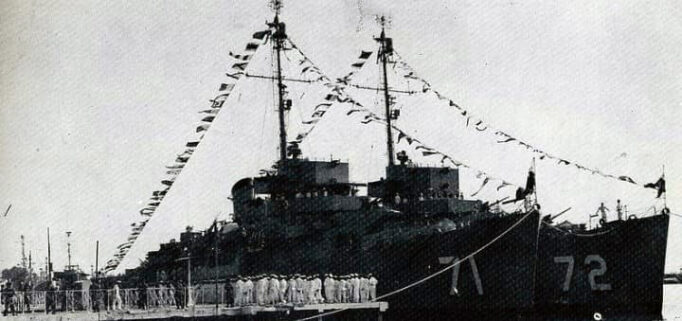
ROKS Kyong-Ki (DE-71)and ROKS Kang Won (DE-72) were former Cannon Class Destroyer Escorts of the Republic of Korea Navy transferred to the Philippine Navy in 1977. (Photograph courtesy of the ROK Ministry of Defense)
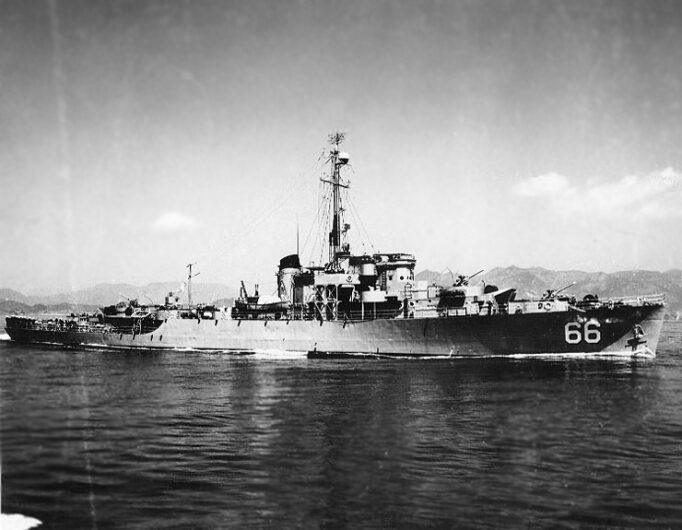
ROKS IMCHIN (PF-66) – A Tacoma Class Frigate of the Republic of Korea Navy. She was the First Korean Warship to visit the Philippines in 1953. (Photo source: https://en.wikipedia.org/wiki/List_of_ships_of_the_Republic_of_Korea_Navy#/media/File:ROKS_Imchin.jpg, accessed 07-June-2020.
THE SCHOOLBOY and THE KILLER. Almost a score later, another milestone in Philippine-Korea Naval relations as 12 Haksaeng (Sea Dolphin/Schoolboy) and Chamsuri (Sea Hawk/Patrol Killer Medium) class Patrol Gunboats were sold to the Philippine Navy. Twelve of the Haksaeng and eight of the Chamsuri’s were transferred during those years and through recommendation from the Philippine Navy to President Fidel V Ramos, himself a Korean War veteran, all ships were named after Filipino Korean War heroes.
“In the early 1990s, when the U.S. troops pulled out from Subic Bay and Clark Air Force Base, ROK made an offer to help the Philippines by selling more than a dozen used but well-maintained 84-footer and 105-footer fast attack patrol boats at $100 each. COMMODORE Plaridel C Garcia led a 3-man team with CDR Petronilo Magno and LCDR Emilio Marayag Jr to ROK Defense Ministry to negotiate the arrangements. A few months later, CDR Emilio Marayag Jr, LCDR Tomas Baino and LCDR Zyril Carlos conducted a month-long ocular inspection at the Chinhae Naval Base near Pusan. These boats augmented the Philippine Navy’s littoral patrols all around the archipelago,” VADM Emilio C Marayag Jr recalls.
These two classes of Patrol gunboats would be known as the Conrado Yap and Tomas Batilo class. As of the present, 3 Tomas Batilo Class Gunboats remain in service, while the last Conrado Yap Fast Attack Craft Patrol bowed out of service this year.
THE PRESENT AND THE FUTURE. Thirteen years after the transfer of BRP Emilio Liwanag (PC-118) the handover and commissioning of the Pohang Class Corvette Ex-ROKS Chung-Ju, now the BRP Conrado Yap (PS-39) marked another milestone in the naval relations between the two countries. These transfers including a former Mulgae Class Landing Craft Utility (LCU-78) was further cemented when Hyundai Heavy Industries was selected by the Philippine Government for the building of two Incheon Class Guided Missile Frigates now known as BRP Jose Rizal (FF-150) which has recently arrived last 23-May-2020. Its sister ship, the BRP Antonio Luna (FF-151), is to join the Philippine Fleet by 2021. The Incheon Class will be known in Philippine Naval Service as the Jose Rizal Class.
CONCLUSION. The naval connection between the Republic of the Philippines and the Republic of Korea dates way back, before the official establishment of relations between the two countries in 1949 that significantly strengthened a deeper bond of friendship paved on the battlefields of war and admired in the years of peace.
References:
- The Filipino Navy, by CDR Fernando Edralin PN, Headquarters Philippine Navy, Roxas Boulevard, Manila, 1973.
- History of the Philippine Navy, by CAPT Aquilino Silverio PN (GSC) and LT Isidro G Espela PN, Headquarters Philippine Navy, Roxas Boulevard, Manila 1976.
- The Philippine Navy in the New Society, by CAPT Antonio Empedrad PN (GSC) Office of Naval History, Bonifacio Naval Station, June 1979.
- The Philippine Navy 1898-1996, by COMMODORE Regino P Giagonia AFP (RES) (Hardbound).
- The Philippine Navy 1898-1998, by COMMODORE Regino P Giagonia AFP (RES) (Softbound) (Centennial Edition).
- Ships and Aircraft book of the Philippine Fleet.
- The Fighting Tenth, by MAJOR Mariano Manawis, PA,1955.
- These are your boys, by the 14th BCT (PEFTOK), 1954.
- Notes on the Korean War, by the author.
- Veteran accounts as related to the author.
- Combat Fleets of the World 1977-1978.
- Jane’s Fighting Ships 1977-78.
- Jane’s Fighting Ships 1981-82.
- Conway’s All the Worlds Fighting Ships 1947-1995.
- Newspapers from the 50’s detailing the deployment and return of Filipino Soldiers to and from Korea from the National Library accessed by the author from July to September 2018.
- http://en.wikipedia.org/wiki/Emilio_S._Liwanag (Accessed on17-October-2013), and details from the Family of CAPT Liwanag dating back 2017.
- COMMODORE Alcaraz, by Ernesto Rodriguez.
About the Author: CDR Mark R Condeno is Deputy Administrative Officer, Philippine Korean Friendship Center and Museum Curator, PEFTOK Korean War Memorial Hall Museum under the Dept of National Defense-Philippine Veterans Affairs Office. In 2007, he was Research Officer at the Office of the Naval Historian, PN; and Projects Officer at the Maritime Historical Branch of the Fleet-Marine Warfare Center, PN. He earned a BS Architecture at Palawan State University. In 1997, he completed the Basic Naval Reserve Officers Training Course, PN; and is with Bravo Class of 1999, PCG Auxiliary Officer’s Indoctrination Course. In 2002, he took the Aerospace Power Course at Air University, USAF. In 2008, he took the Military History Operations Course at U.S. Defense Technical Information Center. He is with Class 26 of Executive Course on National Security, at the National Defense College of the Philippines. He has been published in PAF Review, PAF Perspective, PN Journal, PN Digest, Rough Deck Log, CITEMAR6, USNI Proceedings, Asiaweek, USAF Air & Space Power Journal, and CIMSEC .
